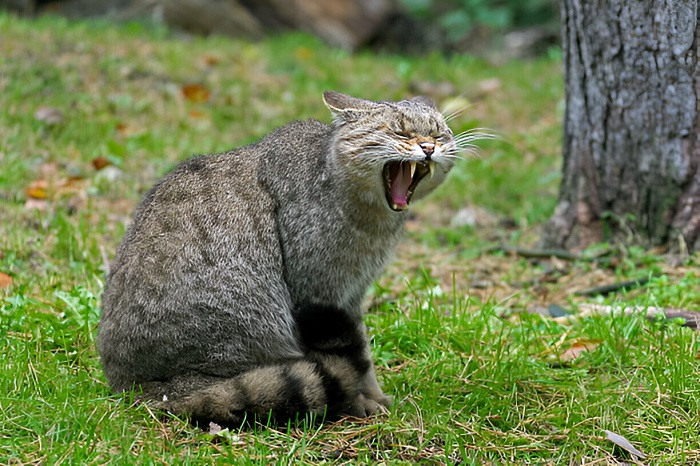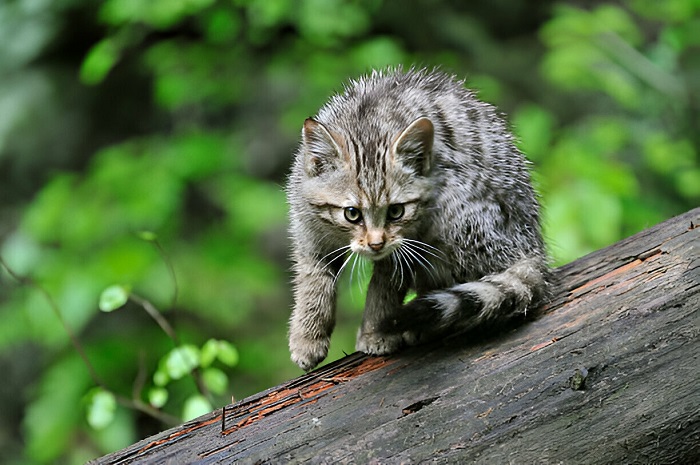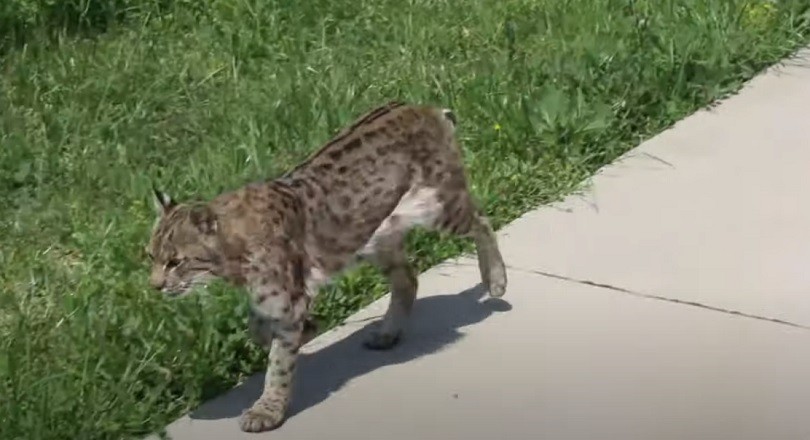Last Updated on February 28, 2025
Bobcats can attack dogs, especially small ones if they feel threatened or cornered. Such incidents are rare but possible.
Bobcats, elusive and solitary wild cats, inhabit North America. These predators usually avoid human interaction. Encounters with pets, including dogs, may occur, especially in areas where human development encroaches on their natural habitats. Small dogs are more at risk due to their size.
Bobcats may see them as potential prey or threats. Pet owners should exercise caution, especially in regions with known bobcat activity. Supervised outdoor time and secure fencing can help protect pets from potential bobcat encounters. Understanding these wild cats’ behaviors and habitats can reduce risks and foster coexistence.
Bobcat Behavior And Territorial Instincts

Bobcats are wild cats known for their elusive nature and strong instincts. These creatures are solitary and fiercely territorial. Understanding their behavior and territorial instincts is crucial. It helps in knowing if they pose a threat to dogs.
Bobcat Habitats And Territories
Bobcats primarily inhabit forests, swamps, and deserts. They prefer areas with dense vegetation for cover. Their territories can range from 1 to 10 square miles. Male bobcats have larger territories than females.
Bobcats mark their territories with scent markings and claw marks. They do this to ward off other bobcats and predators. They are highly protective of their territory and resources.
Signs Of Aggression In Bobcats
Bobcats show aggression through various signs. Recognizing these signs can help prevent encounters. Common signs include:
- Growling and hissing
- Flattened ears
- Puffed-up fur
- Baring teeth
- Direct stare
Bobcats may also swipe with their claws if threatened. They usually prefer to flee rather than fight. But, if cornered, they can be very aggressive.
| Behavior | Meaning |
|---|---|
| Growling and Hissing | Warning of potential attack |
| Flattened Ears | Sign of threat perception |
| Puffed-up Fur | Attempt to appear larger |
| The challenge to the intruder | Direct threat display |
| Direct Stare | Challenge to the intruder |
Dog And Bobcat Encounters
Dog and bobcat encounters can be rare but are concerning. Understanding these interactions helps protect your pets. Bobcats are wild animals and can be unpredictable.
Typical Scenarios Of Conflict
Bobcats usually avoid humans and dogs. However certain situations can lead to conflicts. Here are some common scenarios:
- Near Food Sources: Dogs and bobcats may cross paths near food sources. This includes pet food, garbage, or small prey.
- Territorial Disputes: Bobcats are territorial. If a dog enters their space, a bobcat might feel threatened.
- Protecting Young: A bobcat with kittens is more likely to be aggressive. They will defend their young at all costs.
Factors That Influence Bobcat Aggression
Bobcats are not naturally aggressive towards dogs. Several factors can influence a bobcat’s behavior:
- Size of the Dog: Smaller dogs are more at risk. They appear as easier targets to bobcats.
- Health of the Bobcat: A sick or injured bobcat may be more aggressive. They might see a dog as a threat or easy prey.
- Season: Bobcat behavior changes with the seasons. During mating season, they are more territorial and aggressive.
In general, understanding these factors helps in preventing dangerous encounters. Always supervise your pets and be aware of your surroundings.
Protecting Your Dog From Bobcat Threats
Bobcats are elusive and often avoid humans, but they can pose a threat to pets. Protecting your dog from bobcat threats is crucial, especially if you live in areas where these wild cats are common. This section will provide practical advice on keeping your dog safe from bobcats.
Preventive Measures For Pet Safety
Taking preventive measures can help keep your dog safe from bobcat encounters.
- Secure Your Yard: Install a sturdy fence around your yard. Ensure it is at least 6 feet high.
- Supervise Outdoor Time: Always watch your dog when they are outside, especially during dawn and dusk.
- Remove Attractants: Keep your yard clean and free of food scraps. Secure trash cans with tight lids.
- Install Motion-Activated Lights: These can scare away bobcats from your property.
- Limit Nighttime Access: Keep your dog indoors at night to reduce the risk of encounters.
What To Do In Case Of An Attack
If a bobcat attacks your dog, quick actions are necessary to protect your pet.
- Stay Calm: Panic can escalate the situation. Keep your composure.
- Make Noise: Yell, clap, or use a whistle to scare the bobcat away.
- Use a Deterrent: Spray water or use a stick to fend off the bobcat.
- Seek Veterinary Care: Immediately take your dog to a vet for treatment.
- Report the Incident: Inform local wildlife authorities about the attack.
Implementing these tips can help keep your dog safe from bobcat threats. Stay vigilant and prepared to ensure your dog’s safety.

Frequently Asked Questions
Will A Bobcat Take A Dog?
Yes, a bobcat might attack small dogs if they feel threatened or hungry. Keep pets safe indoors or supervised outside.
What To Do If You See A Bobcat With Your Dog?
Keep your dog close and calm. Slowly back away while keeping your eyes on the bobcat. Avoid sudden movements. Seek shelter if necessary.
How Do I Protect My Dog From A Bobcat?
Keep your dog indoors at night. Supervise outdoor time. Install motion-activated lights. Secure trash and pet food. Build a tall, sturdy fence.
Should I Worry About A Bobcat In My Yard?
Yes, you should be cautious. Bobcats can pose risks to pets and small children. Secure trash and avoid feeding wildlife.
Do Bobcats Pose A Threat To Dogs?
Bobcats can pose a threat to small dogs, especially in rural areas.
Conclusion
Bobcats rarely attack dogs, but it’s not impossible. Always supervise your pets in areas where bobcats live. Secure your yard and avoid leaving food outside. Understanding bobcat behavior can help keep your pets safe. Stay vigilant and take preventive measures to protect your furry friends from potential wildlife encounters.

